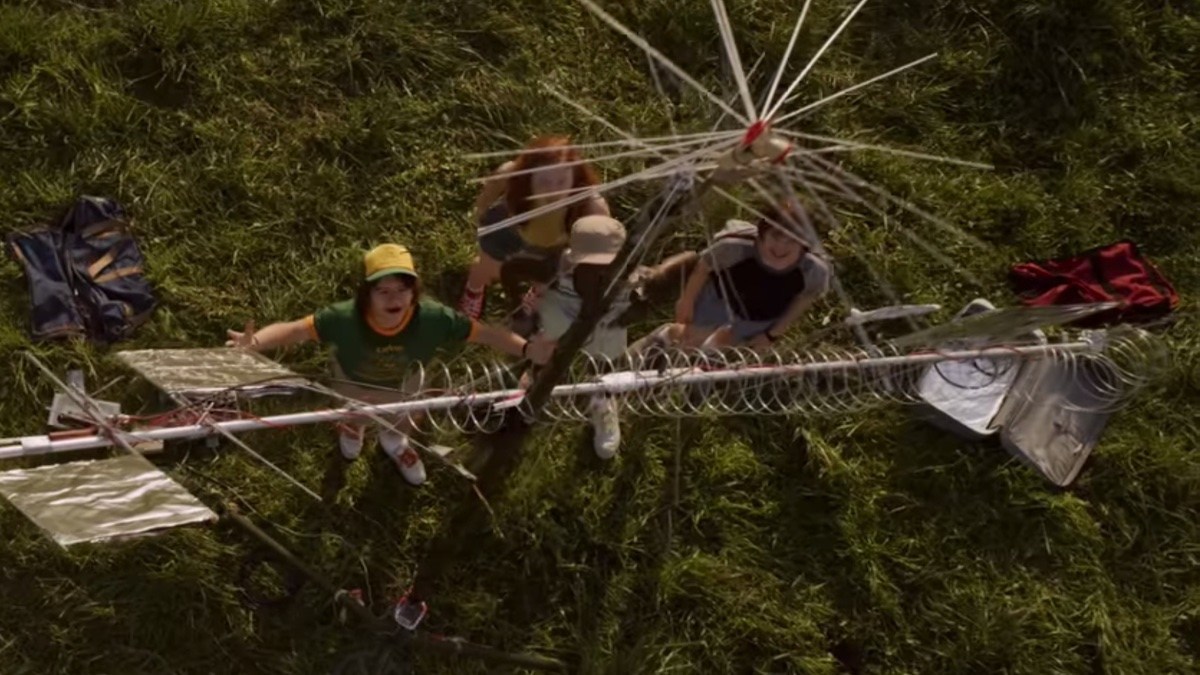
My kids are the north and south poles of creative problem-solving: Kestrel, my 7-year-old, will squeeze a problem until she wrings blood from it; Leif, my 9-year-old, tends to apply ideas flexibly and when one doesn’t work, he will move on to the next. There are pitfalls to both approaches: Kestrel may fixate on beating a strategy into submission that turns out not to work, whereas Leif may move on too quickly from a strategy that would have worked with a minute’s more futzing. Which is best? When the going gets tough, should the tough get going or should the tough try something new?
More broadly, as parents trying to help our kids learn to find their own creative solutions to problems in school and life, should we encourage them to close or to open their minds? If you were searching for creativity like the incarcerated youth in the book Holes, should you dig a small circle very deep or a huge circle very shallow?
My search for an answer turned up a very cool study by researchers in Amsterdam, published in 2010 in the European Review of Social Psychology. They frame the question in terms of flexibility and persistence: Which pathway leads to original, relevant ideas, namely “creativity”?
Again, both have pitfalls. The paper writes that people with high cognitive flexibility “allow more distant associates and ideas to enter working memory” but that when you allow every harebrained possibility to enter your mind, “it is inevitable that irrelevant thoughts or poor solutions are also considered.” On the other hand, people with high cognitive persistence, “only yield original ideas, insights, and solutions after more readily available ideas have been examined and discarded.”
But inside these two flavors of pessimism is reason for optimism: it turns out that BOTH of these strategies produce creativity, in their own way. If you think broadly enough, you will inevitably happen upon good ideas even among the bad ones. If you think deeply enough, you will eventually dig through mundane ideas and into original ones below. The authors call this a “dual pathway to creativity” and they show its twofold power in a series of nifty experiments.
For example, ask yourself what you could do to live a healthier life. Of course, you could brainstorm many possibilities. First, you might come up with something obvious like exercising more. Now you come to a fork in the road: You can either choose to dive into the category “exercising more” or you could choose to brainstorm new categories. If you choose to explore “exercising more” you are demonstrating cognitive persistence.If you choose to jump to a new category, you are demonstrating cognitive flexibility.
When the researchers forced subjects to persist , they showed that people eventually came to more original ideas within exercising like switching out their sedentary workstation for a standing desk. When they forced subjects to be flexible, they showed that people jumped to creative ideas like preventing injury by replacing the old brakes on their bicycle. Certainly there were types of problems and types of brains and types of moods that were more conducive to one strategy or the other — insight problems succumbed quickest to flexibility though persistence eventually worked, too; people with higher fluid intelligence were able to successfully pilot the strategy of flexibility, whereas persistence was best for Hufflepuffs; and forcing a dour mood actually improved creativity through persistence, whereas priming a rosy outlook made people more successfully flexible — but the moral of this long paper is that forced into flexibility or persistence, either produces creativity.
The danger is not necessarily being a “Kestrel” or a “Leif” — a persistent little creature bent on smithing a solution with the force of her hammer or a lightning storm that tests out each peak in turn. The danger is being neither, looking neither broadly nor deeply. Can you help a child learn to plumb the depths of his or her knowledge? Can you encourage him or her to test out new possibilities? Great! It seems like both are valid. As long as your offspring are willing to go deep or go wide, they should be able to catch creativity.




